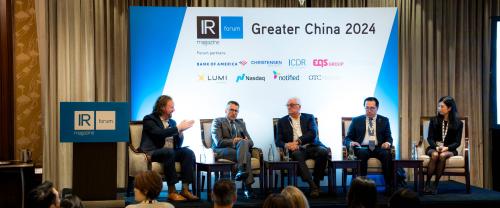The European Commission approved a proposal by the end of 2022 whereby commissions for the execution of buy/sell orders and commissions for investment advice through research reports can be charged jointly. The obligation to break down these fees individually, established in 2018 by the EC itself, is eliminated.
The new charging regime will apply to all companies with a market capitalization of less than €10 bn ($10.8 bn) in the last three years. This is the EC’s second attempt to revive stock broking, an activity that was left for dead by the establishment in 2018 of a set of rules known as Mifid II.

The aim of these rules was to increase investor protection and transparency in financial markets. The consequences of their implementation have been very negative for all market participants, especially independent brokers, analysts and small and medium-sized listed companies.
The only exception has been the large, financially strongest investment banks. These institutions have seen competition in terms of stock market analysis diminish and have a quasi-monopoly in the execution of large buy and sell flows, thanks to their investments in technology. One of Europe’s leading banks, BBV, decided to abandon this activity, a structurally declining business for medium-sized players.
Fees and commissions
The revenues of financial intermediaries – the commission paid by their clients – have declined significantly. Faced with a structural change in their business and the disappearance of more than half their revenues, they had to implement very aggressive cost cuts.
The search for new revenue was very difficult in a business where an important part of their client base – listed companies – were used to paying nothing for the services they received. Stockbrokers’ other clients – institutional investors – suddenly found themselves with great bargaining power over the fees they paid to these intermediaries.

So-called execution fees are paid when buying and selling shares on a stock exchange. Over the last 20 years, as has been the case in many sectors, the margin of these fees over the share price has been decreasing. This was partially offset by the huge increase in trading volume.
Independent financial intermediaries had previously seen their trading commissions fall. The big players, those with the capital to afford major investments in technology, had been installing their own execution systems on fund managers’ desks for years. These managers no longer needed an intermediary to give them buy and sell orders; they could execute them comfortably from their desks.
Mifid II also required for the first time an unbundling of the fees that brokers charged fund managers for providing investment ideas in the form of company research. A transparent price had to be put on research activity, on its quality and on deciding what the added value of each broker was.
Oversupply and costs
An institutional investor may receive recommendations from as many as 30 or 40 brokers. His or her email inbox is saturated daily with more than 400 buy or sell recommendations on the thousands of companies listed. The basic question is whether a manager needs so many providers of ideas and what differentiates one from the other.
The oversupply of research was reflected in the fact that the prices managers were willing to pay were well below brokers’ forecasts. There were all sorts of ‘a la carte fees’ for receiving the daily notes or reports and premium fees for being able to talk to the analysts and have access to the entire library of reports. As is often the case, the players with the most financial muscle offered heavily discounted rates to capture the market in the medium term.
An additional problem with the smaller financial markets, which covers most continental markets, is that global managers do not usually place more than 10 percent-15 percent of their overall portfolio there. This reduces the percentage of fees they are willing to spend on such markets.

Some managers decided to hire the best analysts, who were gradually being moved out of the intermediaries and replaced by young trainee analysts with lower salaries. Mifid II also capped variable or ‘bonus’ salaries at twice the rate, forcing the fixed part of the remuneration to rise in order to retain more experienced analysts. The cost base of the business was increased, while the industry became less attractive to younger talent.
With their revenues significantly reduced, intermediaries had to cut costs. One of the main ways was to reduce the number of companies they analyzed or invited to take part in seminars or roadshows. Listed companies, accustomed to total freebies, did not initially understand this radical change and rejected having to pay. The lack of reporting and a broker to push investment ideas has led many of them to disappear from investors’ radar.
Today’s proposed reform, a return to the old system of joint commissions, comes too late. The regulator’s overzealousness has killed a once highly profitable and competitive business by turning it into a near monopoly of the big American investment banks.
Ricardo Jiménez is the former IR director of Ferrovial










